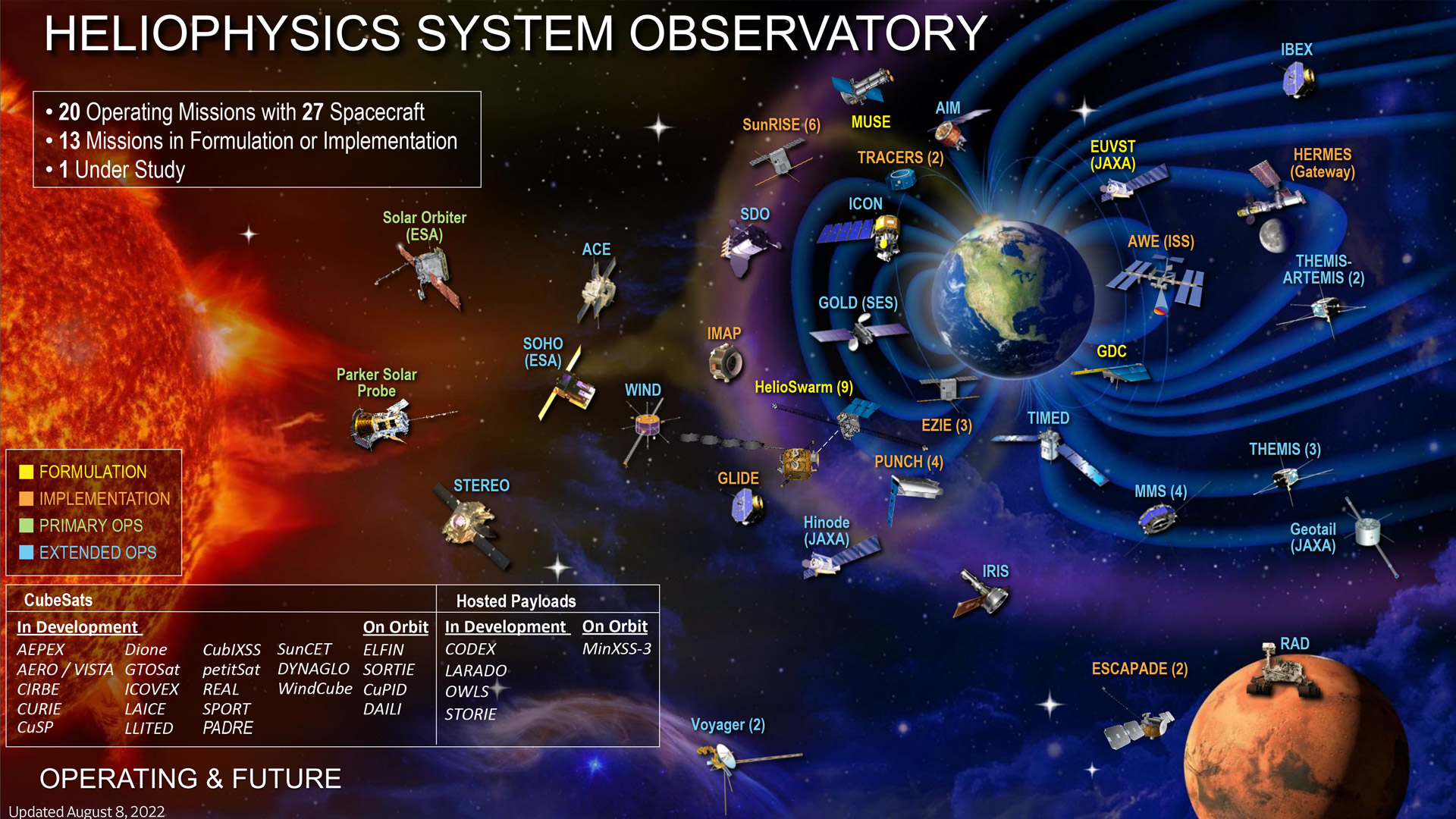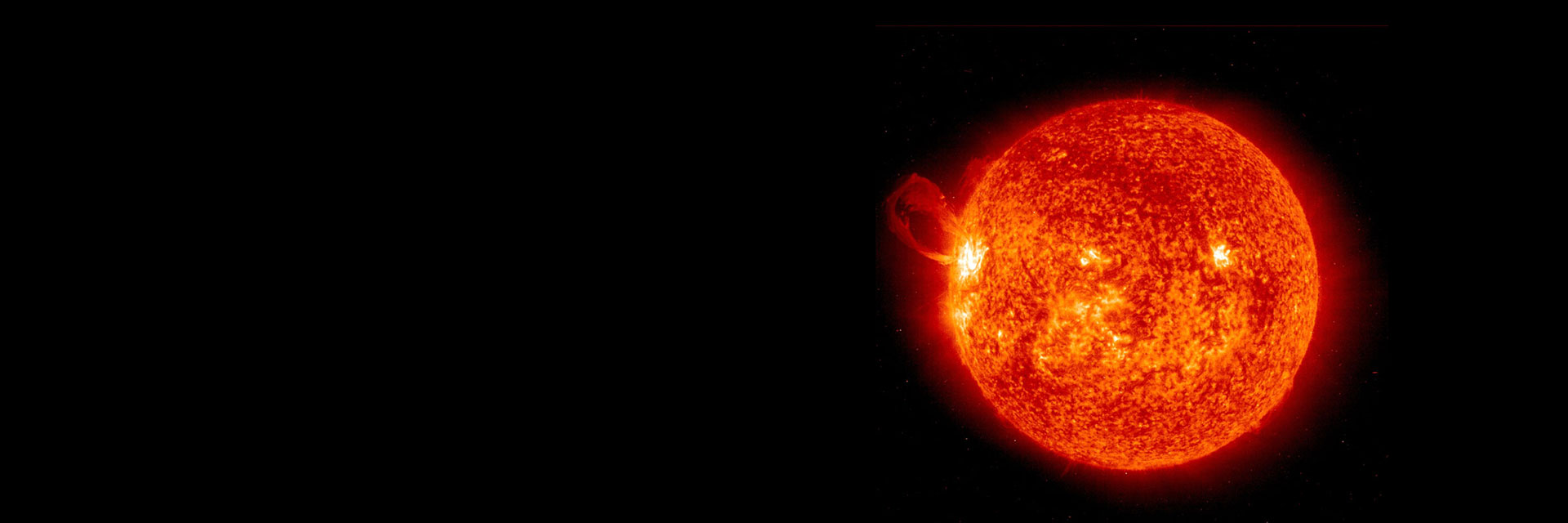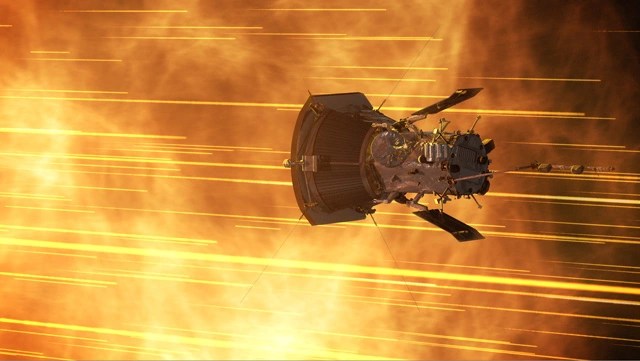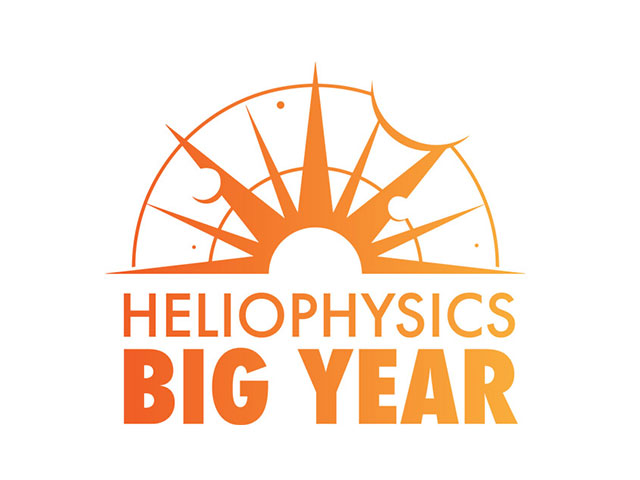How can I use heliophysics missions to excite learners?
The NASA Heliophysics Systems Observatory works with other NASA systems observatories to give NASA a complete picture of the Sun-Earth System. By studying the Sun and other objects in the solar system, scientists can learn more about other stars and planetary systems. In turn, learning about other stars can teach us about the origin of our solar system and the origin of life on Earth.
NASA’s heliophysics mission fleet spans the entire heliosphere. From the Voyager Mission, which crossed the heliosphere boundary, and is the only human-made object to leave the heliosphere; to Parker Solar Probe, which will fly into the atmosphere of the Sun, and will be the closest human-made object to ever "touch the Sun."
Search our Heliophysics Resources for engaging resources connected to these heliophysics missions and more. Or explore the Heliophysics Big Ideas to learn more about how to engage learners in heliophysics activities at different levels.

Explore all of NASA’s Heliophysics Missions and Programs or search a complete directory of NASA Science missions.







